Ever wondered if your electric kettle uses the same technology as those fancy induction cooktops? Well, here’s the scoop: while both seem to heat things up in a flash, not all electric kettles are powered by induction.
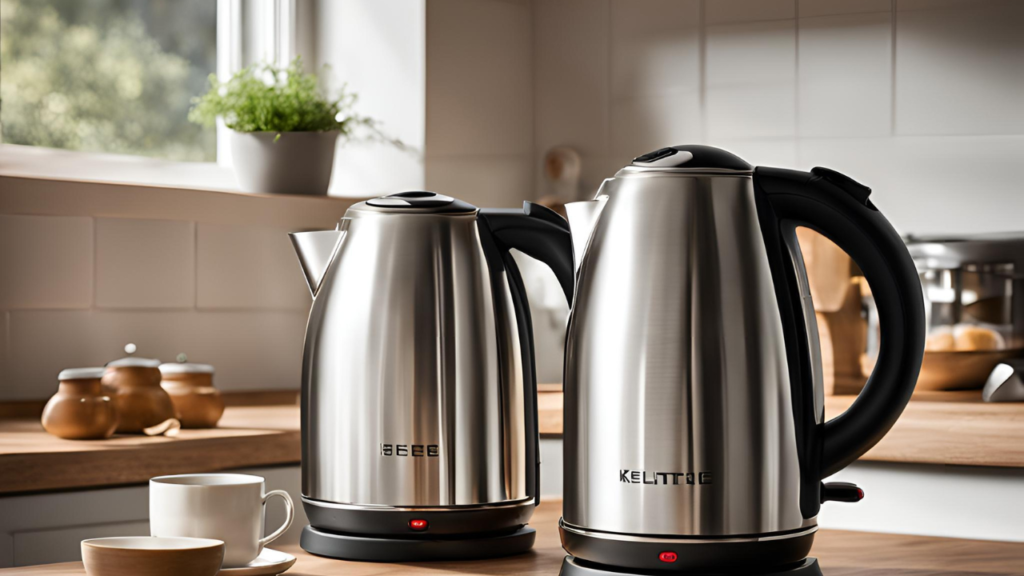
But, the ones that are can boil your water faster and more efficiently. Curious to know how? Let’s look into the world of electric kettles and clear up this mystery once and for all. Ready to discover the truth? Keep reading!
Table of Contents
Understanding Electric Kettles and Induction Heating
What are Electric Kettles?
Electric kettles are a must-have in many kitchens today. They were first introduced in the early 20th century to make boiling water quicker and easier than using a stovetop. Instead of relying on gas or fire, electric kettles use electricity to heat water. The process is simple: they convert electrical energy into heat, using a coil or metal base. This heat makes the water in the kettle boil.
What is Induction Heating?
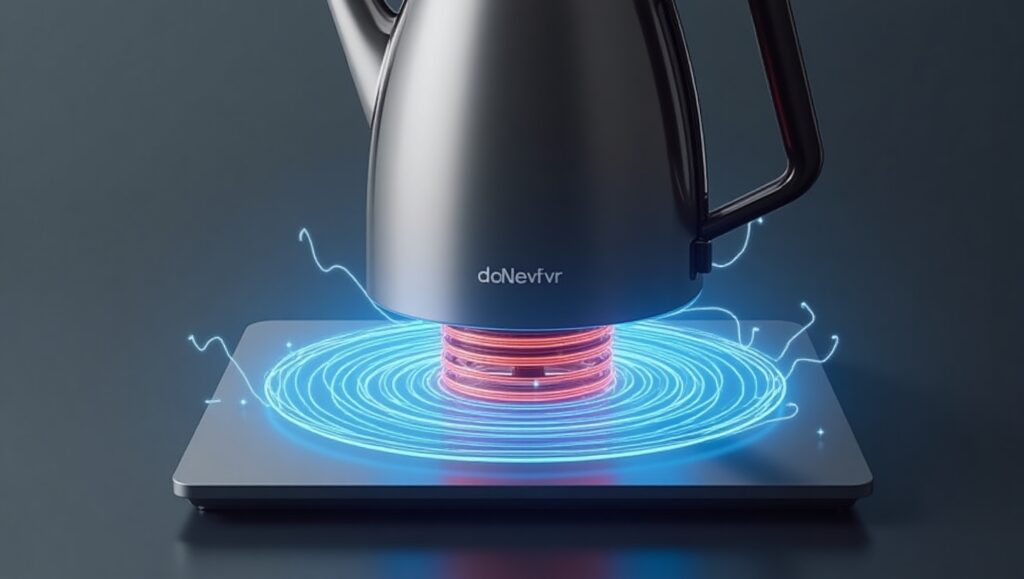
Induction heating is a cool technology that uses electromagnetic fields to generate heat. Unlike traditional heating methods, which rely on direct contact (like a coil or burner), induction uses a magnetic field to directly heat the pot or kettle. This makes induction cooking faster and more efficient, as less energy is wasted.
Most electric kettles don’t use induction. They typically use resistance heating, where a coil heats up and transfers heat to the water. But some newer kettles use induction to heat the water faster and more evenly.
↘️↘️↘️
You can also check other kettle related article👉👉👉 Do kettles use a lot of electricity ?
Key Question: Do Electric Kettles Use Induction?
The simple answer: not all electric kettles use induction. But some do! Let’s explore how these kettles work and whether it’s worth upgrading to one for your kitchen.
Do Electric Kettles Work on Induction?
When it comes to electric kettles, there are two main ways they heat water: traditional heating and induction heating.
Traditional Electric Kettles: Most electric kettles use resistive heating elements. These elements convert electrical energy into heat, which directly heats the water by contact. It’s simple and works well, but it can be slower compared to induction.
Induction Heating: Induction heating is a different beast. Instead of heating a coil or plate, induction uses magnetic fields generated by a special induction coil under the kettle’s base. This magnetic field makes the metal in the kettle heat up, and that heat is then transferred to the water. This procedure is faster and more effective.
Key Difference: The big difference is that most electric kettles don’t use induction technology. They use traditional coils or plates to heat the water directly.
Induction Electric Kettles: Some high-end kettles are designed specifically for induction. These kettles have a magnetic base and work on induction cooktops or as standalone kettles. The main benefits? They boil water faster, use less energy, and allow for better temperature control.
Do All Electric Kettles Use Induction? Not really. Most electric kettles still use the traditional heating method, and only a few induction kettles are available.
↘️↘️↘️↘️
If you don't know an electric kettle completely purify water or not then check this blog👇👇👇 Can an electric kettle purify water?Can Glass Kettles Work on Induction?
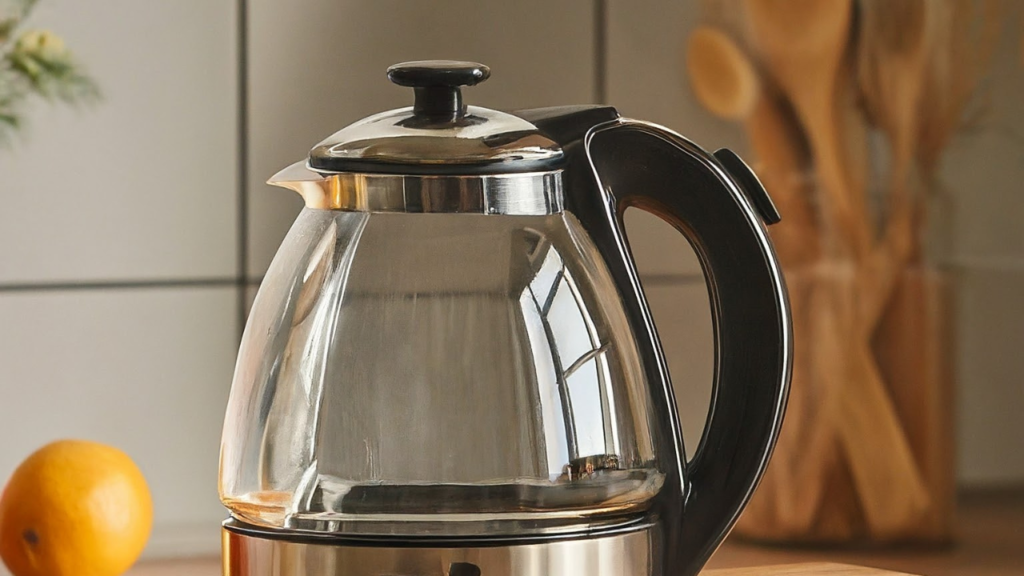
When it comes to glass kettles, most of them can’t work on induction cooktops. But why is that?
What Are Glass Kettles Made Of?
Glass kettles are usually made from borosilicate or tempered glass. These materials are non-magnetic, meaning they can’t react with the magnetic fields needed for induction heating.
Why Most Glass Kettles Can’t Work on Induction
Induction cooktops work by using magnetic fields to generate heat. Since glass isn’t magnetic, it can’t create the heat needed for boiling water on an induction stove. That’s why most glass kettles won’t work on induction.
Exceptions (Induction-Compatible Glass Kettles)
However, some glass kettles are designed with a special metal base. This metal layer at the bottom allows them to work on induction cooktops, even though the glass itself isn’t magnetic.
Should You Choose a Glass Kettle for Induction?
While glass kettles look great and offer a unique aesthetic, they aren’t always the best choice for induction cooktops due to their limitations. Stainless steel or other metal kettles might be a more practical choice if you’re using an induction stove. They heat up quickly and are more reliable for this type of cooking.
So, if you’re looking for a kettle that works seamlessly with induction, you might want to consider other materials.
Does Stainless Steel Kettle Work on Induction?
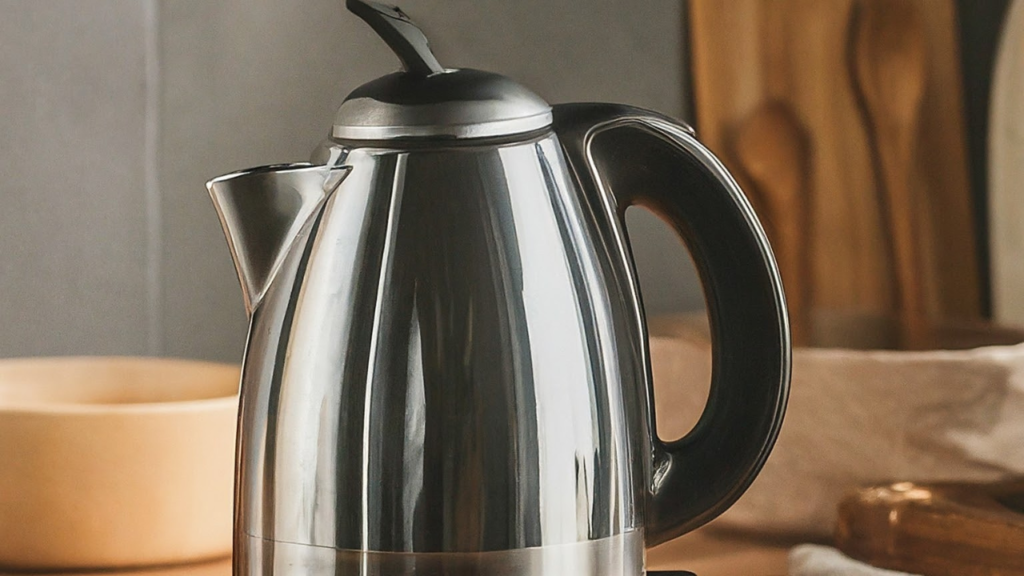
Yes, most stainless steel kettles work on induction cooktops! Here’s why:
Magnetic Properties of Stainless Steel
Stainless steel contains iron, especially types like ferritic or martensitic steel, which makes them magnetic. This is important because induction cooktops rely on magnetic fields to generate heat. However, not all stainless steel is magnetic—some types, like austenitic steel, don’t work with induction.
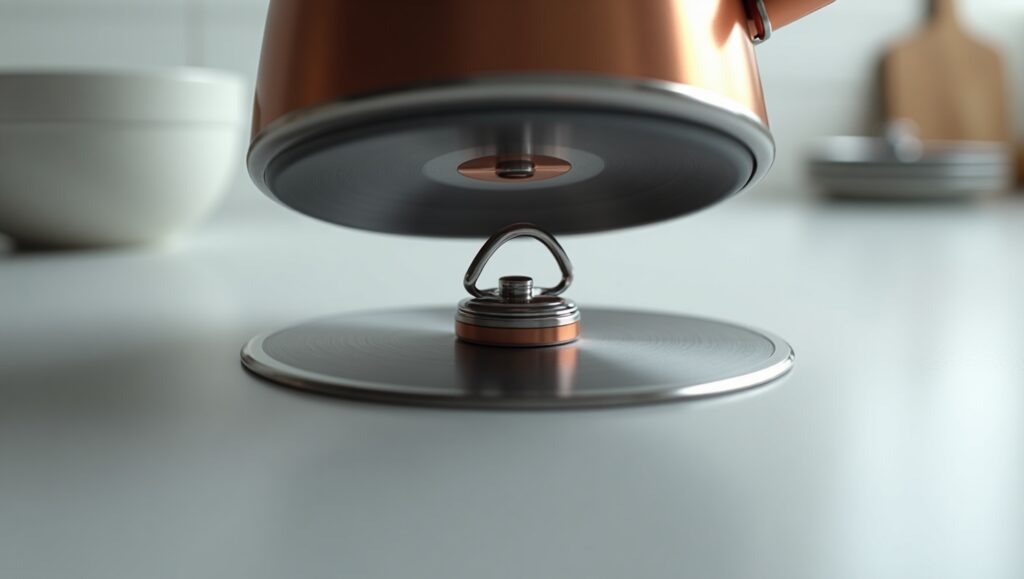
Induction-Compatible Stainless Steel Kettles
Most stainless steel kettles are designed with a magnetic base, making them perfect for induction heating. To make sure a kettle is compatible, look for a flat base that sits evenly on the cooktop and check if it attracts a magnet.
Advantages of Stainless Steel for Induction Heating
Stainless steel kettles heat up quickly and evenly, making them a great choice for induction cooking. They’re also durable, resistant to rust, and won’t stain or retain odors like plastic kettles.
Limitations of Stainless Steel Kettles
The downside? Stainless steel kettles can get discolored over time if not cared for properly. They can also be heavier than glass or plastic kettles.
How to Ensure Your Stainless Steel Kettle Works on Induction
Tip: Simply use a fridge magnet on the base to see if it sticks. If it does, you’re good to go!
Is Boiling Water in a Kettle Using Induction Safe?
Induction heating is known for being a safer option compared to traditional electric heating methods. Here’s why:
Safety Features of Induction Heating:
Induction technology works differently from regular electric heating. Instead of the heating element getting hot, it uses magnetic fields to heat the bottom of the kettle directly. This means the heating element stays cool, which significantly reduces the risk of burns. Plus, induction only works when a compatible vessel (like your kettle) is on the cooktop. If there’s no kettle, the cooktop won’t heat up, preventing any overheating.
Boiling Water on Induction Cooktops:
Boiling water with induction is actually safer than you might think. The controlled heat generation keeps things from getting too hot, and many electric kettles use induction with automatic shut-off features. These safety mechanisms can turn off the kettle when the water is boiling or if the kettle is empty, giving you peace of mind while you boil your water.
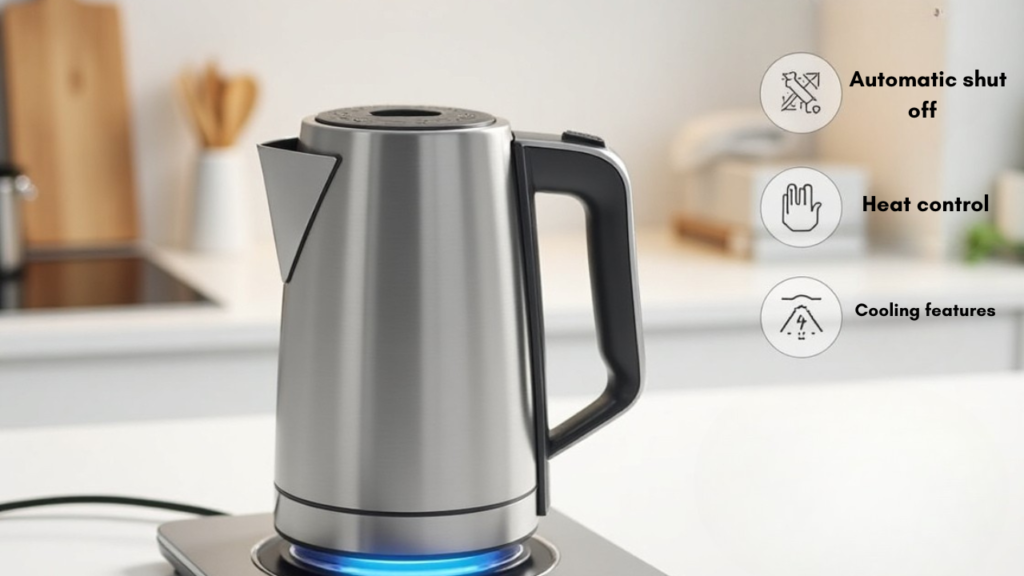
Are There Any Risks?
While induction is generally safe, there are a few things to keep in mind. One potential risk is overheating, especially if the water level in your kettle is too low. Most induction kettles are built with protection to avoid this, but it’s always a good idea to make sure there’s enough water in the kettle. Lastly, it’s essential to check that your kettle and induction cooktop are in good working condition to avoid any safety concerns.
In conclusion, electric kettles that use induction are a safe and efficient way to boil water, as long as you follow basic safety precautions.
Is Induction Better Than Electric?
When it comes to boiling water, you might wonder if induction is really better than regular electric kettles. Let’s break it down:
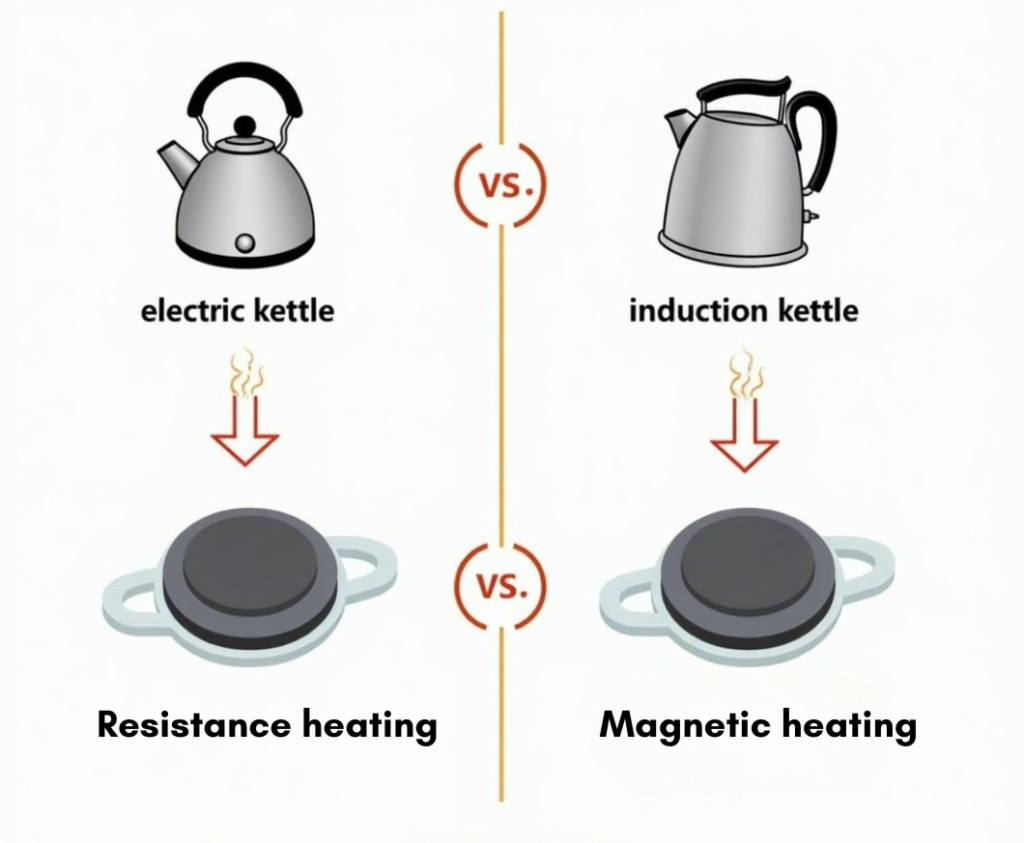
Speed and Efficiency:
Induction kettles are generally faster than electric kettles because they directly heat the metal of the kettle, which means they’re more energy-efficient. In comparison, electric kettles use a resistive element that takes a bit longer to transfer heat to the water.
Energy Efficiency:
Induction kettles use less energy because they transfer heat directly to the kettle, cutting down on heat loss. On the other hand, traditional electric kettles can lose heat to the surrounding air, which makes them less energy-efficient.
Control Over Temperature:
One of the cool features of induction technology is that it gives you precise control over the temperature. This is great if you want to maintain a specific temperature for boiling or simmering. Electric kettles, while super convenient for boiling, don’t offer the same level of temperature control.
Safety:
Induction cooktops are often seen as safer because they only heat up when a compatible kettle or pot is detected. Traditional electric kettles can overheat if left unattended, which could be risky.
Cost Consideration:
Induction kettles are usually more expensive because of the advanced technology they use. If you’re on a budget, traditional electric kettles are cheaper and easy to find.
Is Induction Better for Everyone?
Induction technology is great if you’re looking for speed, energy efficiency, and precise control. But, if you just need something simple and affordable, a traditional electric kettle might be all you need. It’s all about what works best for your needs!

